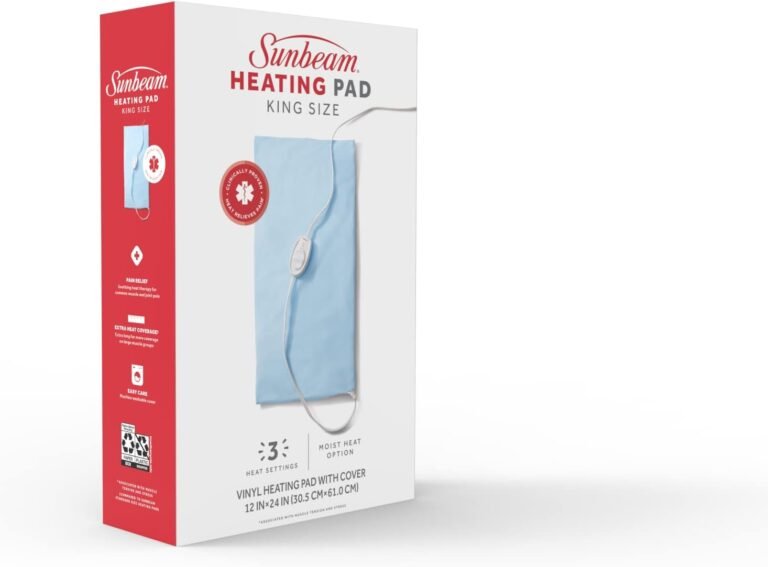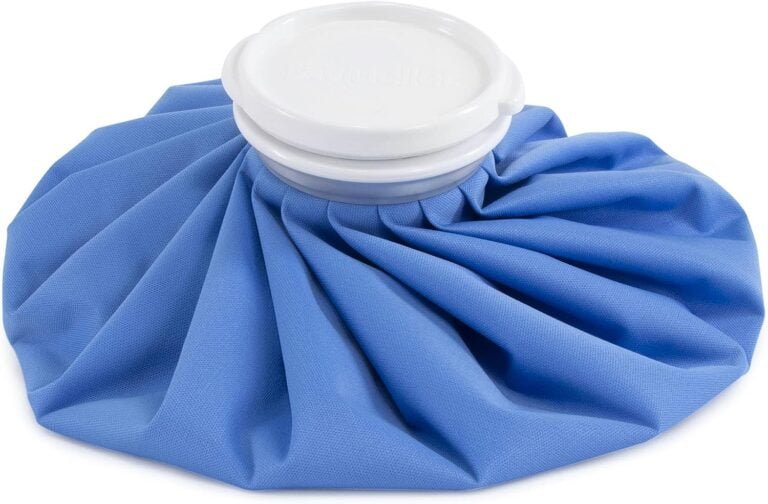Soothe Ankle Pain at Home Without Drugs
Ankle pain can be debilitating, but there are effective and natural ways to find relief at home without resorting to medication. Understanding the causes and factors behind ankle pain is crucial in addressing the problem. Common causes include sprains, injuries, arthritis, and tendinitis. By following the RICE method (Rest, Ice, Compress, Elevate), individuals can alleviate pain and reduce swelling. Stretching, strengthening, and rehabilitation exercises can also provide relief and aid in the healing process. Additionally, alternative home remedies such as Epsom salt, garlic, turmeric, and analgesic creams can be beneficial. However, it is important to know when to seek professional help from a podiatrist, especially if the pain persists or worsens.
Key Takeaways:
- Understanding the causes and factors of ankle pain is essential for effective relief.
- The RICE method (Rest, Ice, Compress, Elevate) can help alleviate pain and reduce swelling.
- Stretching, strengthening, and rehabilitation exercises aid in the healing process.
- Alternative home remedies such as Epsom salt, garlic, turmeric, and analgesic creams can provide relief.
- Seeking professional help from a podiatrist is necessary if the pain persists or worsens.
Understanding Ankle Pain Causes and Factors
Ankle pain can be caused by a range of factors, including sprains, injuries, arthritis, and tendinitis. These conditions can lead to discomfort, limited mobility, and a decrease in overall quality of life. Understanding the underlying causes and factors contributing to ankle pain is essential in finding appropriate relief strategies.
One of the most common causes of ankle pain is a sprain, which occurs when the ligaments supporting the ankle joint are stretched or torn. This can happen during physical activities, such as sports or even simple missteps. Injuries, such as fractures or dislocations, can also result in ankle pain.
Arthritis, a degenerative joint disease, can affect the ankle and cause chronic pain. Both osteoarthritis and rheumatoid arthritis can lead to inflammation and stiffness in the joint, making it difficult to walk or engage in regular activities. Tendinitis, on the other hand, refers to inflammation of the tendons surrounding the ankle joint, often caused by overuse or repetitive motions.
| Cause | Description |
|---|---|
| Sprains | Stretching or tearing of ligaments |
| Injuries | Fractures or dislocations |
| Arthritis | Degenerative joint disease |
| Tendinitis | Inflammation of tendons |
To effectively manage ankle pain, it is vital to address the underlying cause. Resting the ankle and avoiding activities that aggravate the pain is often the first step. The RICE method (Rest, Ice, Compress, Elevate) is a widely recommended approach for immediate relief. Applying ice packs for 10 to 20-minute intervals can help reduce pain and swelling. Wrapping a bandage around the ankle helps compress and decrease swelling. Elevating the foot and applying an ice pack can alleviate pain and swelling.
Seeking Professional Help
If home remedies and conservative measures do not provide adequate relief, it is advisable to consult a medical professional, such as a podiatrist. They can assess the condition, provide a proper diagnosis, and recommend appropriate treatment options. Additional interventions, such as physical therapy, rehabilitation exercises, or even medical procedures like steroid injections or surgery, may be necessary in severe cases. It is important to listen to your body and seek professional help if the pain worsens or persists for an extended period of time.
The RICE Method: Rest, Ice, Compression, Elevation
The RICE method is a proven technique for soothing ankle pain and reducing swelling without drugs. Whether you’ve experienced a sprain, injury, or have arthritis or tendinitis, following the RICE method can help alleviate discomfort and promote healing. Let’s take a closer look at each step of the RICE method:
1. Rest: Resting your ankle is crucial for allowing the injured tissues to heal. Avoid activities that put strain on the ankle and aggravate the pain. By giving your ankle time to rest, you can prevent further damage and provide the necessary environment for recovery.
2. Ice: Applying ice packs to the affected area for 10 to 20-minute intervals is an effective way to reduce pain and swelling. The cold temperature helps constrict blood vessels, which in turn decreases inflammation. Remember to wrap the ice pack in a cloth to protect your skin from direct contact and avoid excessive icing, as prolonged exposure to cold can cause tissue damage.
3. Compression: Wrapping a bandage around the ankle can help compress the tissues and decrease swelling. Compression also provides stability, preventing further injury. Make sure not to wrap too tightly, as this could interfere with circulation. It’s best to follow the instructions provided by your healthcare professional or use compression bandages specifically designed for ankle injuries.
4. Elevation: Elevating your foot above heart level can help reduce swelling and alleviate pain. By raising your ankle, you promote better blood flow and prevent fluid build-up in the injured area. Prop your foot up on a pillow or cushion while sitting or lying down.
Remember, following the RICE method is just the first step in your healing journey. It’s important to consult with a healthcare professional if your pain worsens or persists for an extended period. They can provide a proper diagnosis and recommend additional treatments or therapies tailored to your specific condition.
Stretching, Strengthening, and Rehabilitation Exercises
Stretching, strengthening, and rehabilitation exercises play a vital role in recovering from ankle pain and restoring mobility. These exercises not only help alleviate pain but also improve flexibility, strength, and stability in the ankle joint. It is important to note that these exercises should be started only after the pain and swelling have subsided, and under the guidance of a healthcare professional or physical therapist.
One effective stretching exercise for ankle pain relief is the calf stretch. Stand facing a wall with one foot forward and the other foot back, keeping both heels firmly on the ground. Lean forward, bending the front knee, until you feel a stretch in the calf of the back leg. Hold this position for 20-30 seconds and repeat on the other side.
In addition to stretching, strengthening exercises are crucial for ankle pain recovery. One exercise that targets the ankle muscles is heel raises. Stand near a wall or a sturdy support, rise onto your toes, and then slowly lower your heels back to the ground. Repeat this movement for 10-15 times, gradually increasing the number of repetitions as your strength improves.
Sample Table
| Exercise | Description |
|---|---|
| Calf Stretch | Stand facing a wall with one foot forward and the other foot back, bending the front knee until a stretch is felt in the calf of the back leg. Hold for 20-30 seconds. |
| Heel Raises | Stand near a wall or support, rise onto your toes, and slowly lower your heels back to the ground. Repeat for 10-15 times. |
| Ankle Alphabet | Sit with your legs extended and trace the letters of the alphabet in the air with your toes. Repeat for the other foot. |
Rehabilitation exercises, such as the ankle alphabet, can also aid in ankle pain relief and recovery. Sit with your legs extended and trace the letters of the alphabet in the air with your toes. This exercise helps improve range of motion and strength in the ankle joint. Perform this exercise for both feet, working through the entire alphabet.
Remember to start with gentle and controlled movements, gradually increasing the intensity and duration as your ankle strengthens. Always listen to your body and consult a healthcare professional if you experience any persistent pain or discomfort. With consistency and proper guidance, stretching, strengthening, and rehabilitation exercises can be powerful tools in your journey towards ankle pain relief and regaining full mobility.
Alternative Home Remedies for Ankle Pain
In addition to conventional methods, there are alternative home remedies that can help relieve ankle pain and promote healing. These natural remedies provide a medication-free approach to managing discomfort and restoring mobility. Let’s explore some of these effective remedies.
- Epsom salt: Soaking your ankle in warm water mixed with Epsom salt can provide soothing relief. Epsom salt contains magnesium sulfate, which can help reduce inflammation and alleviate pain. Simply dissolve a cup of Epsom salt in warm water and soak your foot for 15-20 minutes.
- Garlic: Known for its anti-inflammatory properties, garlic can be used to reduce ankle pain. Crush a few cloves of garlic and mix it with warm olive oil. Massage this mixture onto the affected area for a few minutes and then allow it to sit for 30 minutes before rinsing.
- Turmeric: Turmeric contains a compound called curcumin, which has powerful anti-inflammatory and analgesic properties. Create a paste by mixing turmeric powder with water and apply it to the ankle. Leave it on for 30 minutes and then rinse off with warm water.
Additionally, analgesic creams can provide temporary relief from ankle pain. These creams contain ingredients like menthol or capsaicin, which help reduce pain sensations. Apply the cream to the affected area and gently massage it in for a few minutes. Remember to follow the instructions on the cream’s packaging for optimal results.
Table: Comparison of Alternative Home Remedies
| Remedy | Benefits | Method |
|---|---|---|
| Epsom salt | Reduces inflammation | Soak foot in warm water mixed with Epsom salt |
| Garlic | Anti-inflammatory properties | Mix crushed garlic with warm olive oil, massage onto ankle |
| Turmeric | Anti-inflammatory and analgesic effects | Create a paste with turmeric powder and water, apply to ankle |
| Analgesic creams | Temporary pain relief | Apply cream to ankle and massage gently |
It’s important to note that while these alternative remedies can provide relief for mild to moderate ankle pain, they may not be suitable for all individuals or in severe cases. If your ankle pain persists or worsens, it is advisable to consult a healthcare professional, such as a podiatrist. They can evaluate your condition and provide appropriate treatment options to address the underlying cause of your ankle pain.
When to Seek Professional Help
While home remedies can provide significant relief, it’s important to seek professional help if ankle pain persists or worsens. Ankle pain can be caused by various factors, such as sprains, injuries, arthritis, and tendinitis. Although rest, ice, compression, and elevation may alleviate mild to moderate pain, severe or chronic pain may require medical intervention.
If home remedies fail to provide relief or if the pain intensifies, it is advisable to consult a podiatrist. A podiatrist specializes in diagnosing and treating foot and ankle conditions. They can conduct a thorough examination, evaluate your symptoms, and recommend appropriate treatment options.
In some cases, a podiatrist may suggest medical interventions such as steroid injections or surgery. Steroid injections can help reduce inflammation and alleviate pain, while surgery may be necessary to repair damaged ligaments or correct structural issues in the ankle joint.
Physical Therapy and Rehabilitation
Physical therapy and rehabilitation exercises can also play a crucial role in ankle pain management. A skilled physical therapist can guide you through targeted exercises to strengthen the ankle muscles, improve flexibility, and enhance balance. These exercises can promote healing, restore function, and prevent future injuries.
Additionally, a physical therapist can provide hands-on techniques, such as manual therapy and mobilizations, to alleviate pain and improve joint mobility. They can also recommend assistive devices, like braces or orthotics, to provide support and stability during daily activities.
Remember, if ankle pain persists or worsens despite home remedies, it’s important to seek professional help. A qualified healthcare professional can assess your condition, provide an accurate diagnosis, and offer personalized treatment options to help you find relief and regain mobility.
Conclusion
By implementing medication-free and at-home strategies, you can find effective relief for ankle pain and reclaim your mobility. Ankle pain can result from various factors such as sprains, injuries, arthritis, and tendinitis. When experiencing ankle pain, it is crucial to follow the RICE method – Rest, Ice, Compress, and Elevate.
Resting the ankle and avoiding activities that exacerbate the pain is essential. Applying ice packs in 10 to 20-minute intervals can effectively reduce pain and swelling. Wrapping a bandage around the ankle provides compression, thereby decreasing swelling. Additionally, elevating the foot and applying an ice pack can alleviate pain and inflammation.
Stretching the ankle on a daily basis after the pain subsides is crucial for regaining mobility and strengthening the affected area. However, if the pain persists or worsens, it is advisable to seek the help of a podiatrist. They can provide specialized guidance and recommend appropriate treatments, including physical therapy and rehabilitation exercises.
Furthermore, alternative home remedies can also aid in relieving ankle pain. Epsom salt, a natural product, can be used to soak the ankle for soothing relief. Garlic and turmeric, known for their anti-inflammatory properties, can be incorporated into your diet or used topically to alleviate discomfort. Additionally, analgesic creams can provide temporary relief and reduce pain.
In severe cases where home remedies fail to provide relief, medical intervention may be necessary. This can include steroid injections to reduce inflammation or, in extreme cases, surgery to address underlying issues. If your ankle pain worsens or persists beyond a few months, it is important to consult with a healthcare professional for a comprehensive evaluation and personalized treatment plan.
FAQ
What are some common causes of ankle pain?
Ankle pain can be caused by factors such as sprains, injuries, arthritis, and tendinitis.
How can I soothe ankle pain at home without drugs?
You can follow the RICE method, which stands for Rest, Ice, Compression, and Elevation. Rest the ankle, apply ice packs, use compression techniques, and elevate the foot to reduce pain and swelling.
Are there any exercises that can help with ankle pain relief?
Yes, stretching, strengthening, and rehabilitation exercises can be beneficial for ankle pain relief. It is important to stretch daily after the pain subsides and engage in exercises that promote rehabilitation.
Are there any alternative home remedies for ankle pain?
Yes, some alternative home remedies include using Epsom salt, natural products like garlic and turmeric, and analgesic creams. These remedies may provide relief for ankle pain.
When should I seek professional help for ankle pain?
If home remedies do not work or the pain worsens, it is advisable to seek the help of a podiatrist. In severe cases, medical intervention such as steroid injections or surgery may be required.







